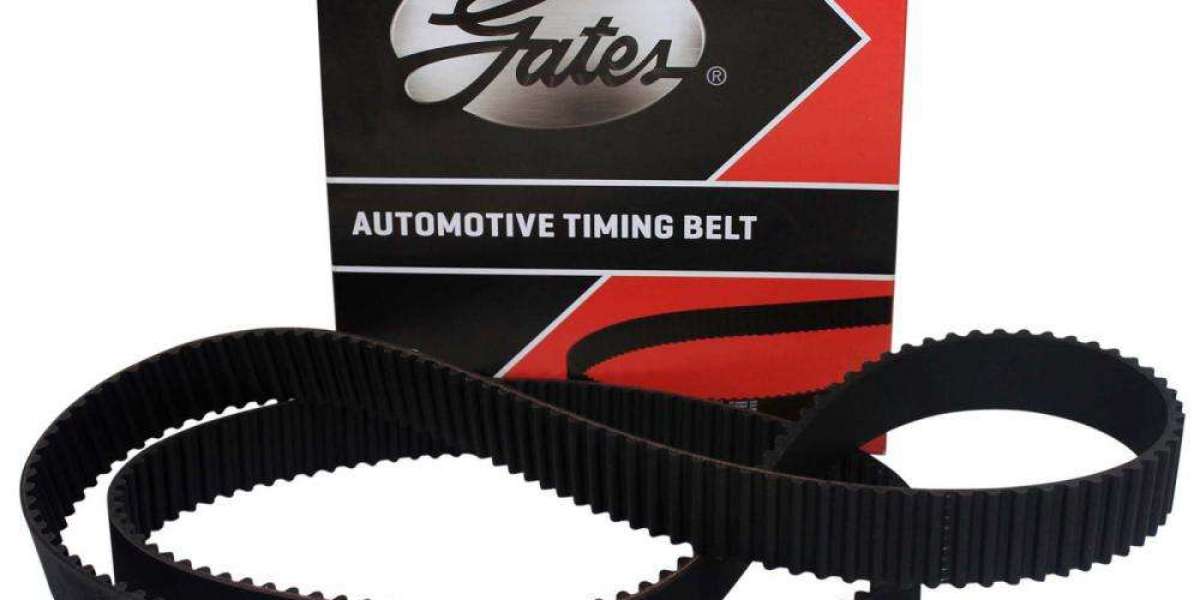Keeping up with vehicle maintenance is essential for ensuring a smooth and trouble-free driving experience. One critical component that often goes unnoticed until it’s too late is the car timing belt. Understanding its importance and knowing when and how to maintain it can save you from costly repairs and unexpected breakdowns.
What is a Car Timing Belt?
The car timing belt is a crucial part of an engine’s internal mechanism. It ensures the synchronization between the crankshaft and camshaft, allowing the engine's valves to open and close at the right times during the intake and exhaust strokes. This precise timing is vital for the engine to run efficiently and avoid any damage.
Signs of a Worn Timing Belt
Recognizing the signs of a worn timing belt can prevent major engine problems. Common indicators include a ticking noise coming from the engine, difficulty starting the car, engine misfires, and oil leaks from the front of the motor. If you notice any of these signs, it’s crucial to have your timing belt inspected by a professional mechanic.
Consequences of a Broken Timing Belt
A broken timing belt can lead to severe engine damage. In interference engines, which are commonly found in modern vehicles, a snapped belt can cause the pistons to collide with the valves. This can result in bent valves, damaged pistons, and even a destroyed engine. Repairing such damage is often extremely costly and time-consuming.
Recommended Replacement Intervals
Manufacturers provide specific intervals for replacing the car timing belt, typically ranging from 60,000 to 100,000 miles. It’s essential to follow these recommendations to avoid unexpected failures. Regular inspections during your vehicle’s maintenance schedule can also help in assessing the belt’s condition and replacing it proactively.
Cost of Replacing a Timing Belt
The cost of replacing a timing belt can vary depending on the make and model of your car, but it generally ranges between $300 to $1,000. While this might seem like a significant expense, it’s far less costly than the potential repairs required if the belt breaks. Investing in timely replacement can save you a substantial amount in the long run.
The Role of a Timing Belt in Engine Performance
The timing belt directly influences engine performance. A well-maintained belt ensures that the engine runs smoothly and efficiently, providing better fuel economy and performance. On the other hand, a worn or damaged belt can lead to poor engine performance, reduced fuel efficiency, and increased emissions.
DIY vs. Professional Replacement
Replacing a car timing belt can be a complex task that requires specialized tools and knowledge. While some experienced DIY enthusiasts might attempt this, it’s generally recommended to have a professional mechanic handle the replacement. Professional mechanics have the expertise and equipment needed to ensure the job is done correctly and safely.
Associated Components to Check
When replacing the timing belt, it’s also wise to inspect and possibly replace other associated components, such as the water pump, tensioners, and pulleys. These parts often have similar life spans to the timing belt and can cause issues if they fail shortly after the belt is replaced. Bundling these replacements can also save on labor costs.
Preventative Maintenance Tips
Regularly checking for any signs of wear and tear, keeping up with scheduled maintenance, and using quality replacement parts can significantly extend the life of your timing belt. Additionally, maintaining proper engine oil levels and quality can help reduce stress on the timing belt and other engine components.
The Impact of Weather and Driving Conditions
Harsh weather conditions and aggressive driving can accelerate the wear of your car timing belt. Extreme temperatures, both hot and cold, as well as frequent stop-and-go driving, can put additional strain on the belt. If you drive in such conditions regularly, it may be wise to have more frequent inspections and replacements.
Understanding Manufacturer Guidelines
Each vehicle manufacturer provides specific guidelines for timing belt maintenance and replacement. These guidelines are based on extensive testing and are designed to optimize the performance and longevity of your vehicle. Adhering to these recommendations is crucial for maintaining your car's health.
Peace of Mind
Replacing the timing belt as part of routine maintenance provides peace of mind. Knowing that this critical component is in good condition allows you to drive with confidence, free from the worry of a sudden breakdown. It’s an investment in your vehicle’s reliability and your safety on the road.
In conclusion, the car timing belt is a small yet vital part of your vehicle’s engine. Its proper maintenance and timely replacement are essential to avoid severe engine damage and ensure optimal performance. By understanding its role, recognizing the signs of wear, and adhering to manufacturer guidelines, you can keep your car running smoothly and avoid costly repairs. Investing in the care of your timing belt ultimately pays off in the form of a reliable, efficient, and long-lasting vehicle.








